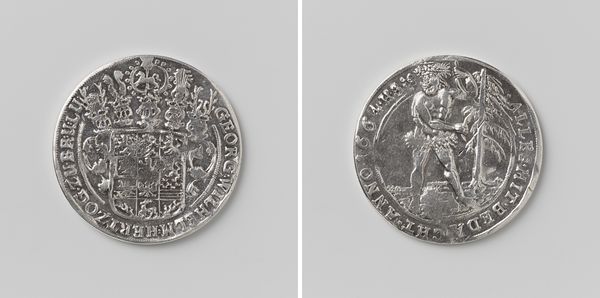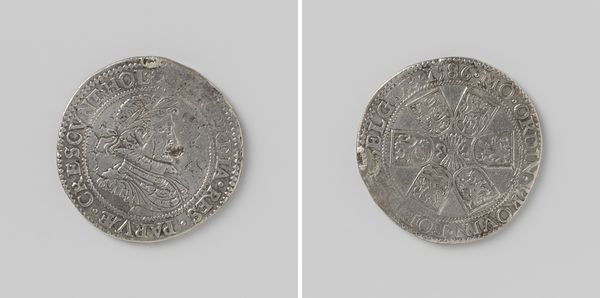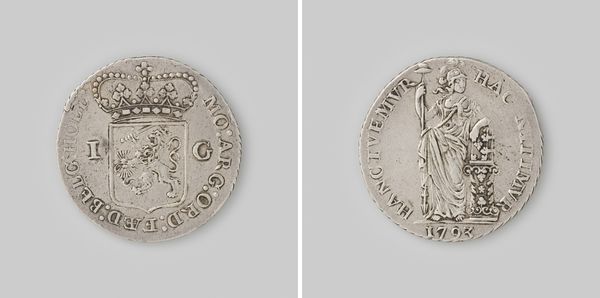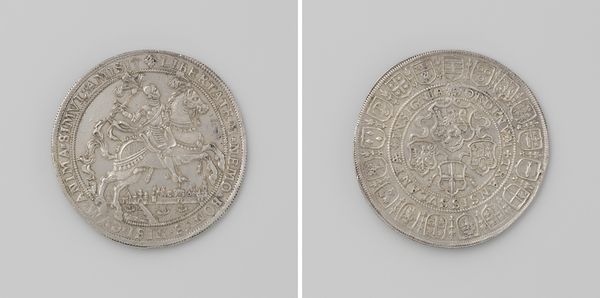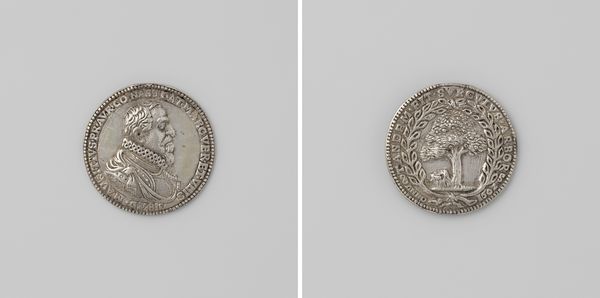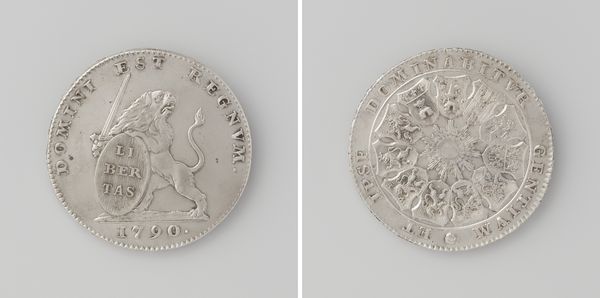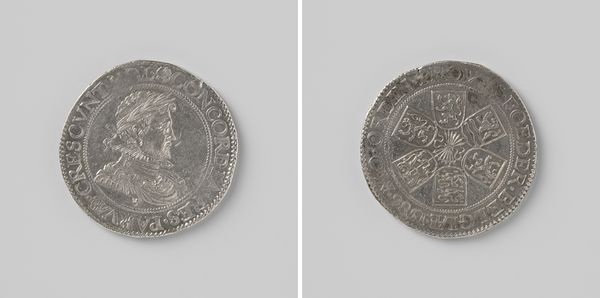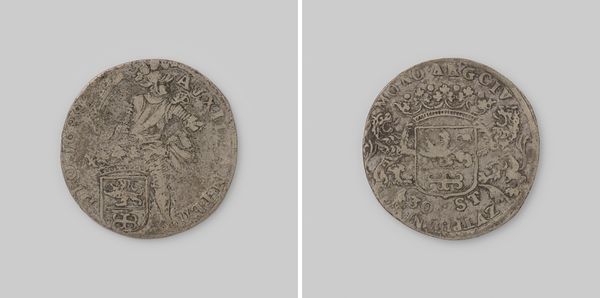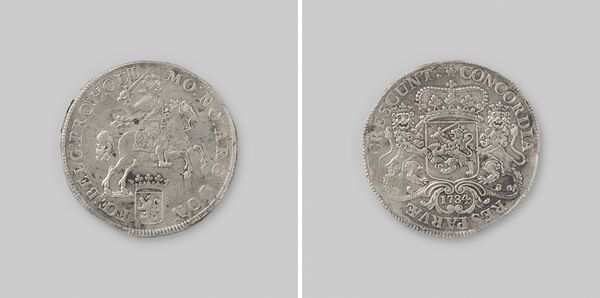
silver, print, metal, relief
#
portrait
#
silver
# print
#
metal
#
relief
#
sculptural image
#
11_renaissance
#
history-painting
Dimensions: diameter 4.1 cm, weight 12.65 gr
Copyright: Rijks Museum: Open Domain
Editor: We’re looking at a silver relief print from 1535 called "David Jorisz, leider der wederdopers," made by an anonymous artist. It’s currently housed in the Rijksmuseum. I’m immediately drawn to the contrasting images on each side. What catches your eye about this piece? Curator: Immediately, the bipartite structure commands attention. The contrasting images presented on each side invite a semiotic reading. Consider the representation of Jorisz himself, rendered in profile, juxtaposed against the architectural rendering on the opposing face. Editor: I see. It’s like a symbolic diptych. The building seems almost idealized. Curator: Precisely. Observe how the rendering emphasizes linear perspective and geometric form, characteristic of Renaissance aesthetic principles. What compositional elements can you identify in Jorisz's portrait that echo these principles, perhaps subtly? Editor: Hmm, the drape of his robes creates a sort of linear flow, almost mirroring the implied lines of perspective on the architectural side? Curator: An astute observation. The strategic deployment of line and form creates a dialogue between the representational and the abstract. This dialogue encourages further semiotic decoding of meaning and symbolism. Consider the material itself: the selection of silver, how might the medium influence the viewer’s experience? Editor: Well, silver gives it a precious feel, maybe lending more importance to the figure and scene? I’m finding this more intriguing now! Curator: Indeed. By considering form, composition, and materiality, we can decode this piece as more than mere historical documentation; it’s a structured argument.
Comments
No comments
Be the first to comment and join the conversation on the ultimate creative platform.
